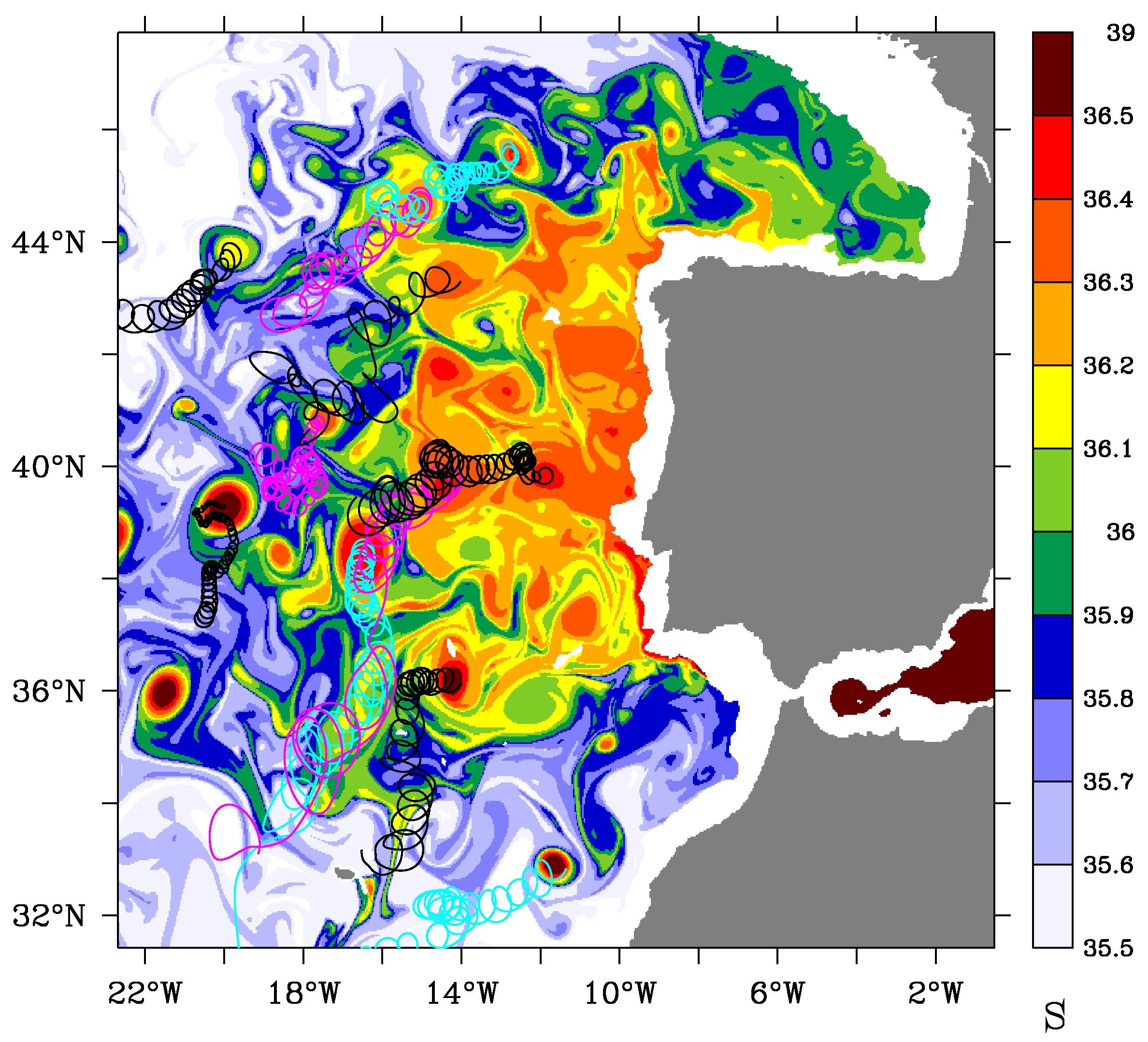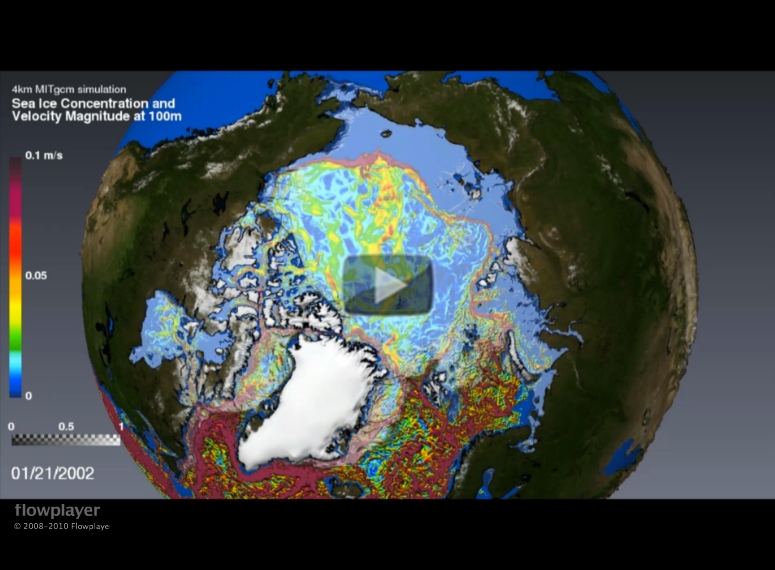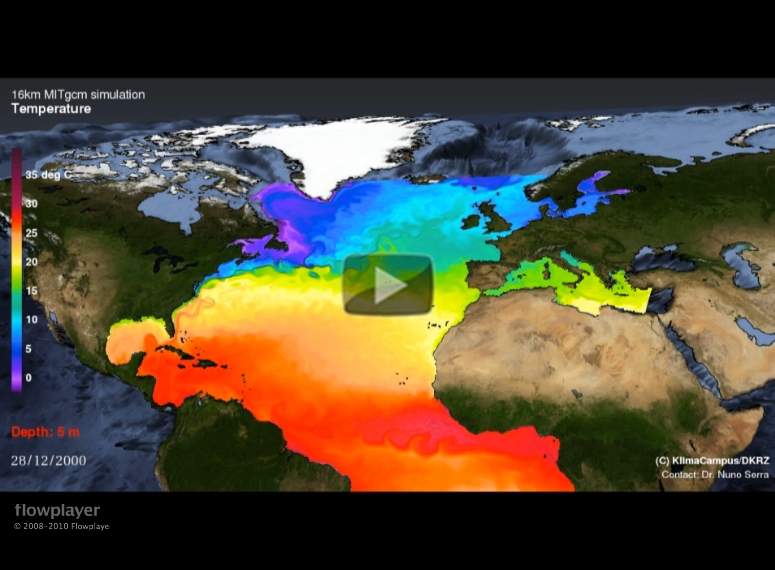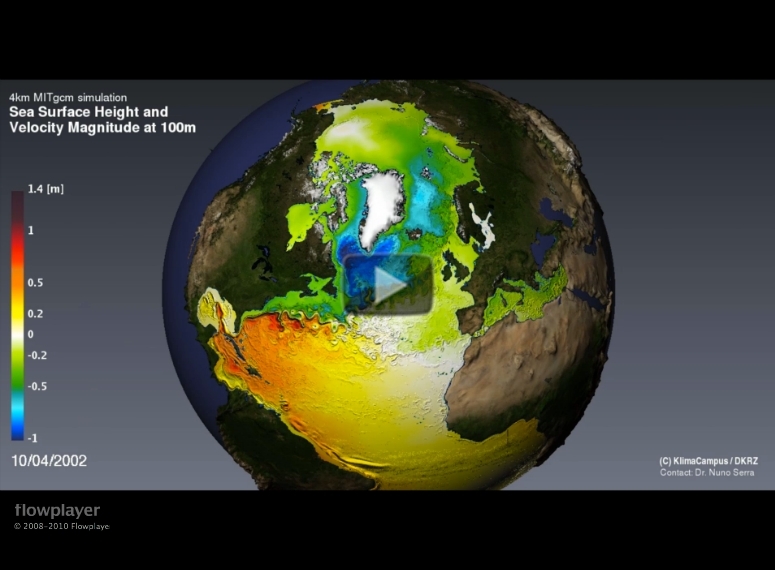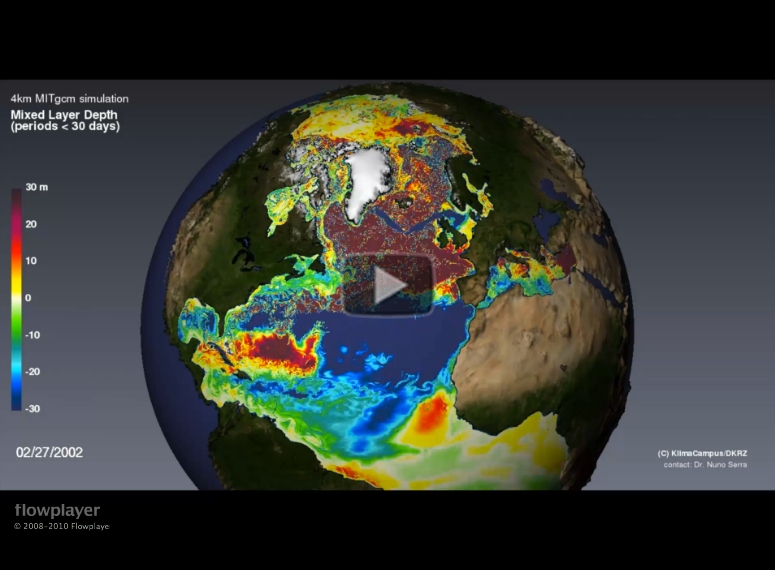Overflowing with Movies
story by Helen Hill

Nuno Serra, a researcher at the Institute of Oceanography (IfM) at the Center for Earth System Research and Sustainability at the University of Hamburg has used MITgcm in many ocean modeling projects over the past eight years, both from a process-modelling perspective and “realistically”, incorporating forcing from NCEP and ECMWF. He is especially interested in the processes regulating North Atlantic and North Pacific inter-annual to inter-decadal variability. A particular passion is overflows.
Overflow Modeling
The high rate of evaporation in the Mediterranean Sea leads to a significantly large salinity in that basin when compared with the Atlantic. The salty and relatively warm Mediterranean Water flows through the Strait of Gibraltar and afterwards along the Iberian Peninsula into the northeast Atlantic. At an intermediate depth (800-1200m), the water flows over a complex system of underwater canyons and promontories. In the course of this, strong eddies (meddies) separate from the main flow and spread into the ocean interior. Such overflow systems and the instabilities and eddies they spawn are rich numerical modeling ground.
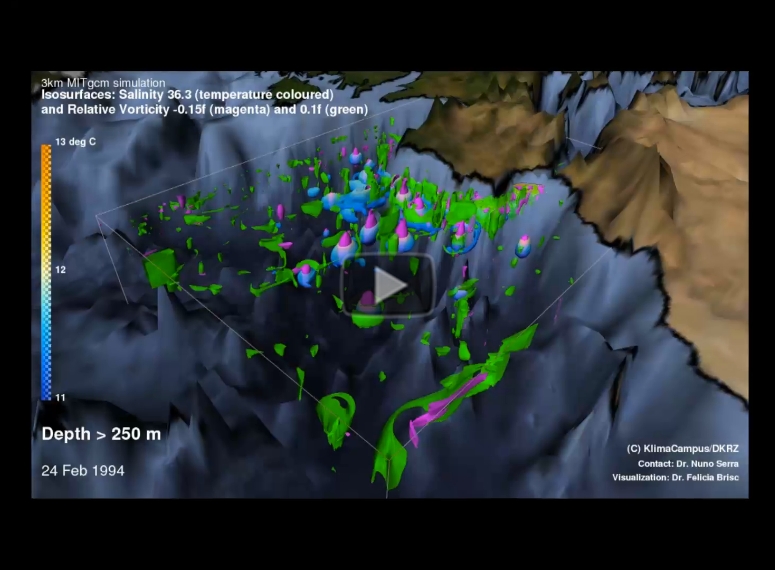
Eddies Enclose Warm and Salty Mediterranean Water – click on the image to access the animation: Video copyright of the University of Hamburg, Klimacampus (Klimacampus.de)
The above animation, based on output from an MITgcm simulation of Mediterranean outflow, shows the Mediterranean Water eddies (meddies for short) wandering through the ocean (violet/blue) while rotating clockwise and enclosing the salty and warm water, keeping it over several years. During their movement, the meddies are influenced by other oceanic eddies (shown in green), whose rotation sense is counterclockwise. Due to this interaction, the meddies modify their translation direction, sometimes start to wobble and can eventually lose their stability and be destroyed. One amazing feature is, in Serra’s opinion, the impact of the deep Meddies in the upper ocean and on the slope/open-ocean exchange, something you can read more about in a 2010 paper Surface expression of Mediterranean Water dipoles and their contribution to the shelf/slope – open ocean exchange.
Serra has also studied the Greenland-Iceland Scotland dense overflows. One curious feature he reports about the Denmark St. and the Faroe-Bank Channel overflows is their anti-phase relationship at decadal time-scales. You can read more about Serra’s modeling work in this area in his 2010 Tellus paper On the low-frequency phase relation between the Denmark Strait and the Faroe-Bank Channel overflows.
Questions? Contact Nuno.
Select Publications
- Serra, N., S. Sadoux, I. Ambar & D. Renouard (2002), Observations and laboratory modeling of Meddy generation at Cape St. Vincent, Journal of Physical Oceanography, 32(1), 3-25, doi: 10.1175/1520-0485(2002)032<0003:OALMOM>2.0.CO;2
- Serra, N., I. Ambar & D. Boutov (2010), Surface expression of Mediterranean Water dipoles and their contribution to the shelf/slope – open ocean exchange, Ocean Science, 6, 191-209, www.ocean-sci.net/6/191/2010
- Serra, N., R. H. Käse, A. Köhl, D. Stammer & D. Quadfasel (2010), On the low-frequency phase relation between the Denmark Strait and the Faroe-Bank Channel overflows, Tellus, 62A, 530-550, doi:10.1111/j.1600-0870.2010.00445.x
More Movies based on MITgcm Simulations
Since 2006 Nuno has been working in the field of data assimilation working with Detlef Stammer using the MITgcm adjoint. In particular, as part of a German funded (Federal Ministry for science and education) project he has been involved in setting-up a high-resolution (16km resolution) ocean synthesis for the Atlantic and Arctic. The following are a selection of visualizations from that work. Click on an image to access the animation and caption in each case. All videos are copyright of the University of Hamburg, Klimacampus (Klimacampus.de)

